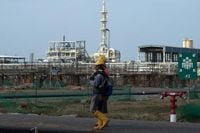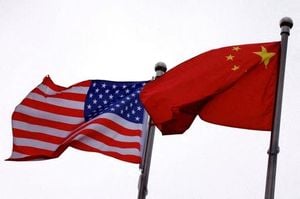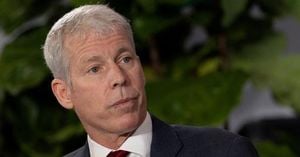Rare earth materials—those essential elements tucked away in everything from smartphones to fighter jets—have once again taken center stage in global economic conversations. On October 28, 2025, rare earth stocks tumbled, sending a ripple of anxiety through investors and manufacturers alike. The culprit? Persistent trade tensions and growing fears about the world’s dependence on China for these critical resources, according to reporting from Barron’s. With American manufacturing so reliant on a steady stream of these minerals, any disruption can feel a bit like a wrench in the gears of an already complex machine.
But just as the market was digesting this volatility, a glimmer of hope emerged from the other side of the world. On October 29, 2025, Lynas Rare Earths Ltd.—a company that has quietly staked its claim as a linchpin in the rare earth supply chain—announced a bold move to increase its processing capacity for heavy rare earths at its Malaysian refinery. The company’s plan, as detailed in a statement referenced by Bloomberg, involves building a new separation facility at its plant in Malaysia. This facility will be able to process up to 5,000 tons of heavy rare earth feedstock annually, sourced from both its Mount Weld mine in Australia and other Malaysian suppliers.
Why does this matter so much? For starters, rare earth elements aren’t just another commodity. They’re the backbone of modern technology, powering everything from the magnets in electric vehicles to the guidance systems in precision missiles. As demand for robotics, advanced tech, and military hardware continues to climb, so too does the scramble for a reliable supply of these minerals. And for years, China has dominated this market, producing the lion’s share of the world’s rare earths and controlling much of the processing capacity.
That dominance has left the rest of the world in a precarious position. As Barron’s reports, investors and manufacturers are increasingly worried about what a shortage of rare earths could mean for American industry. Imagine assembly lines grinding to a halt, or defense contractors scrambling to source materials for crucial components. It’s not just a hypothetical scenario—these are real risks that keep supply chain managers and policymakers up at night.
Enter Lynas Rare Earths Ltd., a company that’s become something of a rare bird itself. According to Bloomberg, Lynas is currently the only producer outside China able to supply both light and heavy rare earth products. That distinction is more significant than it might sound at first blush. Light rare earths, such as neodymium and praseodymium, are vital for magnets and electronics, while heavy rare earths like dysprosium and terbium are indispensable in high-performance magnets and military tech. Having a single company capable of delivering both types outside of China gives Lynas an outsized role in the global supply chain.
The company’s Malaysian expansion is more than just a business move—it’s a strategic play in the ongoing tug-of-war over critical materials. The new facility, designed to handle up to 5,000 tons of heavy rare earth feedstock per year, will draw on resources from the Mount Weld mine in Australia, one of the richest rare earth deposits in the world, as well as additional sources in Malaysia. This isn’t just about increasing output; it’s about building resilience into a supply chain that has proven vulnerable to geopolitical shocks.
“The expansion aims to meet increasing demand for rare earth metals used in robotics, advanced technology, and military applications,” Lynas stated in its announcement, as cited by Bloomberg. That demand isn’t showing any signs of slowing down. As the world pushes toward electrification, automation, and next-generation defense systems, the appetite for rare earths only grows. And with China’s grip on the sector showing no signs of loosening, alternative suppliers like Lynas are more important than ever.
Of course, this isn’t to say the road ahead will be smooth. The rare earth sector is notoriously volatile, with prices swinging wildly in response to everything from trade policy to environmental regulations. The recent drop in rare earth stocks, as reported by Barron’s, is a stark reminder of just how sensitive the market can be. Investors are left wondering not just how to play the sector, but how to manage the very real risks that come with it.
For American manufacturers, the stakes are especially high. The specter of a rare earth shortage isn’t just a distant worry—it’s a tangible threat to industries ranging from automotive to aerospace. As one industry analyst put it, “A lack of rare earths could mean serious disruptions for American manufacturing.” That’s not hyperbole; it’s a reflection of just how tightly woven these materials are into the fabric of modern industry.
Yet, there are reasons for cautious optimism. The U.S. government and private sector have been actively exploring ways to reduce dependence on Chinese rare earths, from investing in domestic mining to forging partnerships with allies like Australia. The expansion of Lynas’s Malaysian facility fits neatly into this broader strategy, offering a potential lifeline for manufacturers seeking a more diversified and secure supply.
Still, the path to rare earth independence is fraught with challenges. Building and scaling up processing facilities is a complex, capital-intensive endeavor, often hampered by regulatory hurdles and environmental concerns. And while Lynas’s new plant is a step in the right direction, it’s just one piece of a much larger puzzle. The global race for rare earths is, in many ways, just getting started.
As the dust settles from the latest bout of market jitters, one thing is clear: the world’s reliance on rare earths isn’t going away anytime soon. Companies like Lynas are stepping up to fill the gaps, but the balance of power in the sector remains delicate. For investors, manufacturers, and policymakers alike, the message is unmistakable—securing a stable supply of these critical materials is no longer just a business concern. It’s a matter of economic and national security, with implications that reach far beyond the trading floor.
With new investments and strategic moves underway, the rare earth landscape is shifting. Whether these efforts will be enough to insulate the world from future shocks remains to be seen, but one thing is certain: the race to secure rare earths is more urgent—and more complicated—than ever before.




